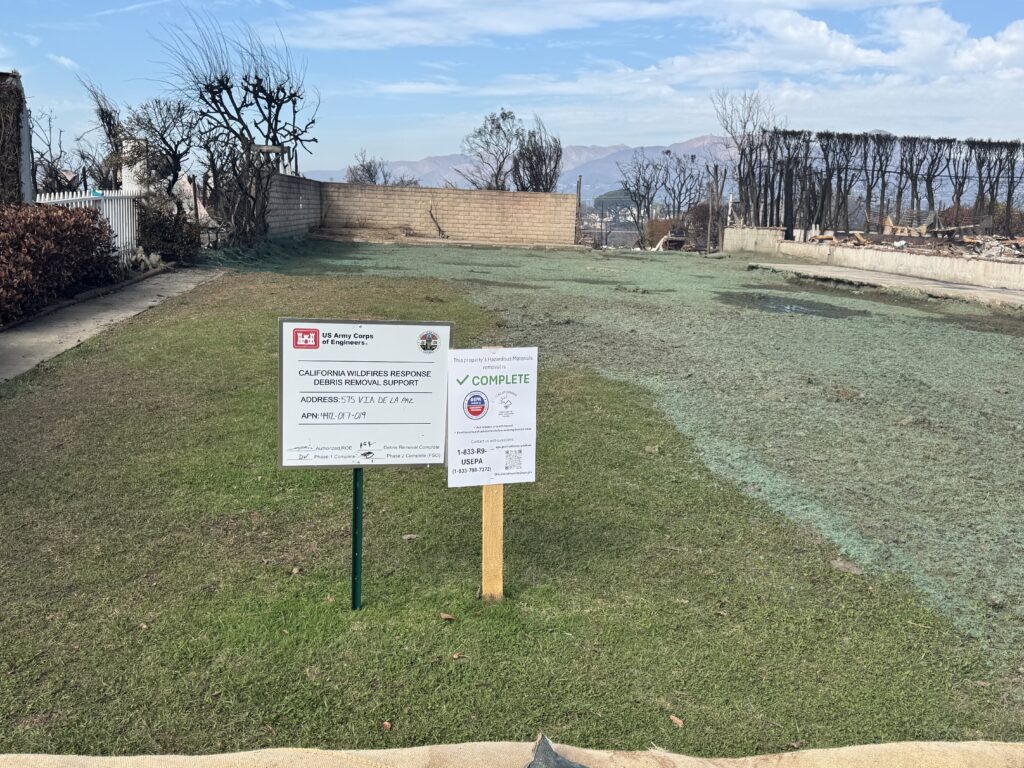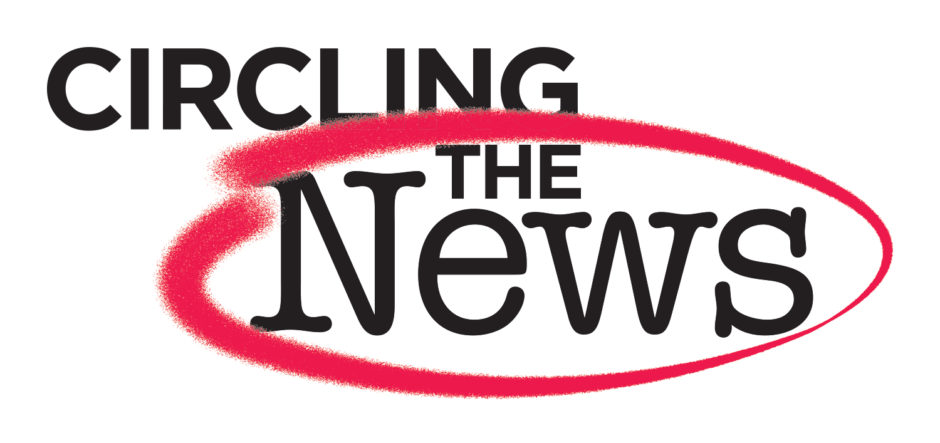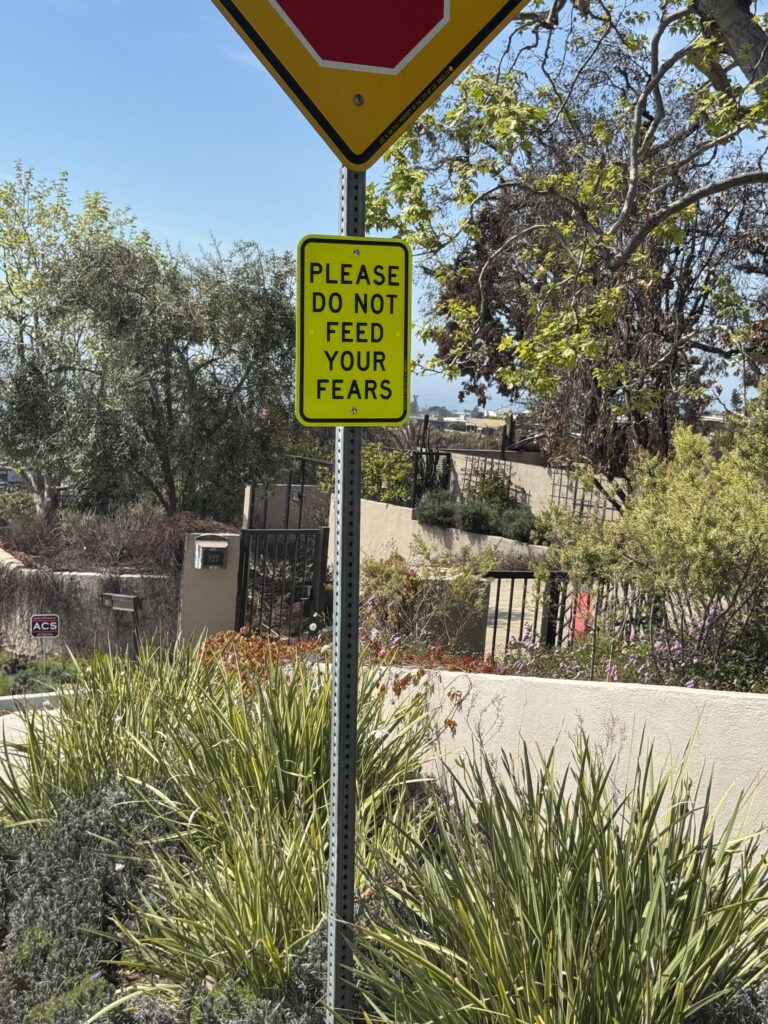“Communities are rebuilding after L.A. fires despite lack of soil testing for toxic substances” was the headline in a March 27 L.A. Times Story.
The first two paragraphs made it clear that there are possible toxins after the January Fires that destroyed the two communities.
The story continued, “In Altadena and the Pacific Palisades neighborhood of L.A., reconstruction has begun despite the fact that the soil on affected properties has not been tested for toxic substances.
“The Federal Emergency Management Agency’s controversial decision to forgo soil testing in communities burned in the Eaton and Palisades wildfires sparked pushback Wednesday as California lawmakers questioned whether the practice will prevent residents from knowing if there are toxic substances on the land before rebuilding begins.”
Only at the end of the story are the toxins identified: “Environmental and health officials have warned that wildfire ash from burned buildings can contain hazardous substances including cancer-causing arsenic and brain-damaging lead.”
Circling the News is not advocating one way or another for people to return to standing homes before they feel safe, but I am suggesting that scientists/journalists tell you want the toxins are, so you can test for it.
As long as toxins are not named nor defined and the term is generically used, it does not allow a person to take action. Instead, the term toxins continues to spread fear.
Additionally, since some toxins such as Benzene are naturally occurring, a baseline reading before and after the fire would give clearer results.
LEAD:
Lead, which filled gas tanks for almost as long as cars have been driving, was effectively banned in the United States by the mid-1990s.
Lead was also used in paint, and it was banned in 1971 in California. It was banned in the United States in 1978, and owners of pre-1978 “target housing” has to be disclosed, and any homes that performed renovation, repair or painting projects in child-occupied facilities had to follow specific rules.
According to the EPA, 87% of homes built before 1940 still contain lead-based paint. This number decreases slightly to 69% in homes built between 1940 to 1959, and then drops to 24% for homes built between 1960 to 1977.
In California, the Residential Lead-Based Paint Hazard Reduction Act of 1992 states that individuals must permanently remove lead-based paint hazards in accordance with federal standards. Our house on Radcliffe, built in the 1930s and renovated in 1994, had to have lead testing done before the renovation.
Generally, it seems that any home in the Palisades built after 1978 or remodeled after that date should not have lead.
Lead is also found in older water pipes—but the Los Angeles Department of Water and Power has tested for metals in the water and areas were given the “all-clear.”
Here are other items that might have lead: toys, cosmetics (about 60% of lipstick test positive for lead), pottery (glazed on some ceramic items, porcelain and China), soil (contaminated from leaded gasoline, which remains contaminated a long time), lead ammunition, diving and fishing weights and lures, batteries, electronics, jewelry and antiques.
If you are worried about lead, have your property tested and if found have it removed.
ASBESTOS:
The use of asbestos was banned in California in 1977. However, houses built between 1930 and 1950 may still contain asbestos.
Asbestos is a group of naturally occurring fibrous silicate minerals that were used because it was considered a good insulator and is fire resistant.
Asbestos could be found in attic and wall insulation, vinyl floor tiles, roofing and siding shingles and automobile clutches and brakes. Despite California’s ban on asbestos, homes constructed after 1989 may have asbestos as some imported products may have contained this harmful mineral.
Some people cite the World Trade Center Towers destruction as a reason to be worried in Pacific Palisades. According to several sources, asbestos was still legal in the 1960s and thousands of tons were used in the construction of the twin towers, both 1,700 feet tall. After 911, the air was filled with jet fuel, asbestos and other particulates with estimates of between 1,000 and 2,000 tons of asbestos released in the atmosphere.
If you are worried about asbestos on your property, have it tested and removed.
BENZENE:
This editor was told that some people are worried about benzene in the ground.
According to the Centers for Disease Control, benzene is formed in nature and also from human activities. Natural sources include volcanoes and forest fires. It is also a natural part of crude oil, gasoline and cigarette smoke.
Benzene is used often in the United States to make other chemicals that are used to make plastics, resins, nylon and synthetic fibers.
It is also used to make detergents, drugs, dyes, some types of lubricants and pesticides.
About 50% of the entire nationwide (United States) exposure to benzene results from smoking tobacco or from exposure to tobacco smoke. An interesting fact is that benzene has been detected on Mars.
According to a University of Technology Sidney May 2023 story (“Plants Remove Cancer Causing Toxins from Air”), “A ground-breaking study has revealed that plants can efficiently remove toxic petrol fumes, including cancer causing compounds such as benzene, from indoor air.
“Not only can plants remove the majority of pollutants from the air in a matter of hours, they remove the most harmful petrol-related pollutants from the air most efficiently. For example, a known carcinogen benzene is digested at a faster rate than less harmful substances, like alcohols,” the study reported. “The researchers found that the Ambius small green wall, containing a mix of indoor plants, was highly effective at removing harmful, cancer-causing pollutants, with 97 per cent of the most toxic compounds removed from the surrounding air in just eight hours.”
Some residents worry that benzene will travel through ground soil to underground water (wells). Palisades residents are on a public water system and receive water from the Department of Power and Water. This utility company routinely tests for numerous chemicals.

When land is cleared of debris, the Army Corps of Engineers scrapes the top six inches of soil. It is then removed and taken to a dumping site.
HOME TESTING:
In an early newsletter, CTN asked readers if they had properties tested. Of those who responded, here are the results.
Standing home on Las Pulgas: The testing was specifically for asbestos and lead. Testing was done only on hard surfaces with a wipe (no upholstery or soft surfaces); results indicated no evidence of asbestos. However, there was lead in high enough levels to require a certified lead abatement company to address this situation safely.
Standing home on El Medio: “There was no asbestos found in the house as a result of smoke and ash entering from the fire. There was 15% asbestos in our old kitchen linoleum. Due to water damage from things that melted in our refrigerator it will need to be removed by a special abatement team. Of various spots tested throughout our house, only one floor location by an exterior door exceeded the federal standard for lead, but we will still have all surfaces wiped down by the same abatement team that’s taking out the flooring. From what I’ve heard finding some lead inside surviving homes is common.
Michael Lane Townhouse: We have found high levels of lead in our townhome, adjacent to Topanga State Park. The kitchen, main bedroom, and some ductwork was positive. Further testing is needed.
Upper Bienveneda standing home: We tested positive for lead, negative for asbestos. This test result, per the many WhatsApp chats we are all on, seems to be common for homes on Bienveneda and in Marquez. A friend on Glenhaven whose home burned completely had one testing sample come back with trace amounts of asbestos.
Two El Medio bluff homes: We were out of town last weekend and my brother called me to let us know that there were several people on our property removing asbestos! We are not sure where that came from as we had everything removed 30 years ago when we bought our home.
New Home on Embury – complete rebuild: Tests were negative for asbestos and lead.
Standing garage studio on Fiske: No asbestos and some lead of differing amounts.
A recent news story was released about 20 firefighters that were tested after the Palisades/Eaton Fires. There was no distinction about which area they were located. They were found with lead and mercury levels five and three times higher, respectively, than a control group of firefighters. Firefighters regularly risk exposure to chemicals and metals — including lead and mercury — when responding to house and commercial fires in an urban setting.
Firefighters were on these sites for several days, as opposed to a single fire-fighting activity.
AIR QUALITY:
After the January Fires, there have been three rain events. Does rain clean the atmosphere?
According to a Massachusetts Institute of Technology 2015 research paper “Can Rain Clean the Atmosphere?” researchers wrote: “As a raindrop falls through the atmosphere, it can attract tens to hundreds of tiny aerosol particles to its surface before hitting the ground. The process by which droplets and aerosols attract is coagulation, a natural phenomenon that can act to clear the air of pollutants like soot, sulfates, and organic particles.”
A 2023 CBS News story “Does Rain Help Clear Wildfire Smoke? A Meteorologist Explains”) “Not only does rain nourish plants, and replenish water supplies, but it cleanses the air. As rain falls through the atmosphere, it attracts ten to hundreds of suspended particles in the air. These can range from pollutants to organic particles, such as is the case now, with tons of smoke suspended in the air from the Canadian wildfires. This is a process called “coagulation.” When the rain travels from the atmosphere to the ground, it takes all of these suspended particles down with it, essentially cleansing the air”



Thank you for this thorough research.
Can you please advise what companies can one hire to do soil testing?
A Restoration company that cleaned my neighbors townhome in the Highlands was told to throw away everything. I witnessed them putting all of this on our sidewalk. Skis, clothes hangars, car seats, wood furniture, and trash bags that coyotes rip into. I asked if they had called for bulk pick up because a lot of this isn’t getting removed every week. He said a truck just comes by for everything. Not true. Please remind your readers you need to call bulk pick up for all of this mess they are discarding. They don’t pick up plastic bags, they pick up specific items. Everything else must fit in a trashcan or call for a large bin to be delivered. And If you’re truly worried that everything is so toxic, why is it being put on the sidewalk where your neighbors walk by? Why aren’t Restoration companies hauling this away themselves?
Thank you for this timely and thoughtful article. Sue is right; let’s define what these toxins are. We submitted samples for lead testing to the USC Dornsife Contaminant Level Evaluation and Analysis for Neighborhoods (CLEAN) program. These can be dropped off at the box at the front of the American Legion. https://publicexchange.usc.edu/la-wildfire-soil-testing/. This program and one out of Loyola Marymount is a good crowd-sourcing approach but hash limitations FEMA testing of lots should have been done as with other fires, and someone needs to explain why this is not being done. One of our concerns when it comes to rebuilding is would we be able to grow vegetables or will the land be unsafe for that purpose. We can probably learn a lot about how persistent the toxins are from other fire zones.
My more immediate concern is air quality. I was at our property on Radcliffe for several days and also walked around town and Temescal above Bowdoin where a lot of trucks are moving. On Radcliffe, on one day while I was there a couple of trucks went down the street spraying water to keep the dust down. On a second day I only saw one. I did not see any of these during my brief walk up town. Temescal above Bowdoin across from Pali High was extremely dusty due to all the truck traffic. It’s not clear to me who pays for these trucks, but they are a crucial element and some kind of system needs to be put in place to ensure that they run consistently where needed.
Very informative. Thanks for your great reporting.
I’ll let you know about the vegetables. I dug up my strawberry plants (there were worms and ants and ladybugs) and planted them in a pot on the patio of the apartment. They are blooming and I’ll eat the strawberries. I’ve been told that plants like the phosphorus found in ash, which is why so many homes around the Palisades have thriving roses and other plants, now. My only regret is not being able to save the blueberry bushes. A wall from the house fell on them and I couldn’t get them out.
Regarding air quality, trucks with the ACE spray water while they are doing debris removal. The debris is put “like a burrito” in a plastic that is pulled over and covers the truck bed. I would assume that private contractors have to follow the same protocol. The trucks on Temescal are only hauling concrete and steel, they are not carrying debris.
Sue